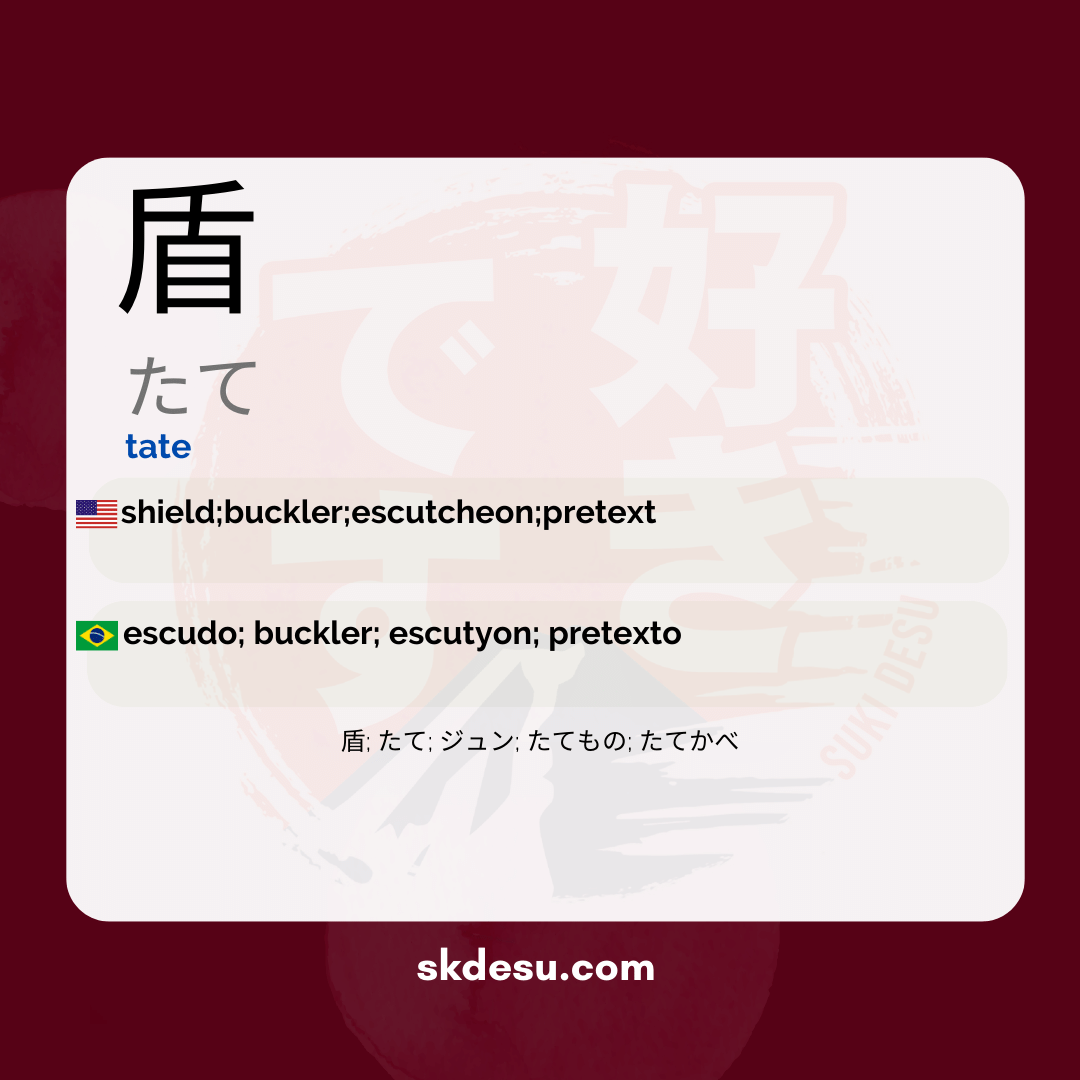Translation and Meaning of: 盾 - tate
The Japanese word 盾[たて] is a term that carries both literal and symbolic meanings, being essential for those who study the language or are interested in Japanese culture. In this article, we will explore its meaning, origin, writing in kanji, and how it is used in everyday life. Additionally, we will look at some cultural curiosities and tips for memorizing this vocabulary effectively.
If you have ever watched anime or played Japanese games, you have probably encountered 盾 in contexts of battle or protection. But does its use go beyond that? How do the Japanese perceive this word in their daily lives? Here at Suki Nihongo, we aim to provide accurate and useful information for your learning, so let's get straight to the point!
Meaning and use of 盾[たて]
盾[たて] means "shield," referring to both the physical object used for defense in battles and abstract concepts of protection. In the Japanese language, it appears in various contexts, from historical descriptions to metaphorical expressions. For example, the phrase "彼は批判の盾になった" (He became a shield against criticism) illustrates its figurative use.
Although it is not an extremely common word in modern Japanese, 盾 is still relevant in discussions about martial arts, RPG games, and even in debates about security and resilience. Its pronunciation, "tate," is straightforward, with no complex tonal variations, which makes it easier for beginner students to memorize.
Origin and writing of the kanji 盾
The kanji 盾 is composed of the radicals 目 (eye) and 厂 (cliff), suggesting an idea of "protecting the vision" or "visual defense." This composition reflects its original function well: an object that blocks attacks, whether in real or metaphorical battles. Etymologically, it is believed that the term has ancient roots, associated with the first defensive equipment used in the Japanese archipelago.
It is worth noting that 盾 does not have common alternative kun'yomi or on'yomi readings, remaining stable as "tate" in most contexts. This simplifies its learning, as there are no pronounced variations that could confuse students. However, in some compounds, such as 盾突く (tetsuku, "to resist"), the reading may change, although these cases are less frequent.
Tips for memorization and curiosities
An effective way to memorize 盾 is to associate it with visual images. Think of the kanji as a shield covering an eye (the radical 目), creating a mental connection between the writing and its meaning. This technique, known as "visual mnemonic," is widely recommended by language learning experts like James Heisig, author of "Remembering the Kanji."
In the universe of anime and manga, 盾 stands out in works like "Tate no Yuusha no Nariagari" (The Rising of the Shield Hero), where the protagonist wields a legendary shield as his main weapon. This type of representation reinforces the symbolism of protection and resilience associated with the word, in addition to serving as an interesting cultural resource for students.
Vocabulary
Expand your vocabulary with related words:
Synonyms and similar words
- 盾 (tate) - shield
- たてもの (tatemono) - Building, structure
- たてかべ (takekabe) - Support walls, walled
Romaji: tate
Kana: たて
Type: noun
L: jlpt-n1
Translation / Meaning: shield; Buckler; Escutyon; pretext
Meaning in English: shield;buckler;escutcheon;pretext
Definition: A weapon used to protect oneself from attacks or dangers.
Quick Access
- Vocabulary
- Writing
- Sentences
How to Write in Japanese - (盾) tate
See below a step-by-step guide on how to write the word by hand in Japanese. (盾) tate:
Example Sentences - (盾) tate
See below some example sentences:
Tate wo motte tatakaimashou
Let's fight a shield.
- 盾 (tate) - shield
- を (wo) - object particle
- 持って (motte) - segurando
- 戦いましょう (tatakaimashou) - let's fight
Mujun ga aru
There is a contradiction.
- 矛盾 (mujun) - It means "contradiction" or "inconsistency"
- が (ga) - particle that indicates the subject of the sentence
- ある (aru) - Verb that means "to exist"
Other Words of this Type: noun
See other words from our dictionary that are also: noun

